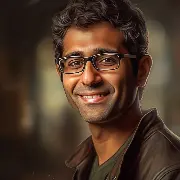Ronald Reagan’s first inaugural message as governor of California on January 5, 1967, addressed various issues that continue to recur throughout history. His speech serves as a reminder that lessons from previous eras often apply to our current times. Reagan discussed crime, welfare reform, education, and radicalism on campus, but what stands out is his rhetorical framework. He viewed these individual issues as aspects of a general relationship between government and the people. Republicans and conservatives grappling with inflation, crime, illegal immigration, and a culture of repudiation could take note of how Reagan thought about the social contract.
According to Reagan, the American government was not omnipotent, and the Founders did not intend for it to lord over subjects. They wanted the law to reflect the consensus of self-governed citizens. Reagan evoked a “Creative Society” where “government will lead but not rule, listen but not lecture.” Public officials were intermediaries between voters and the government, and their job was to keep government in check. They represented taxpayers and must ensure that “no permanent structure of government ever encroaches on freedom.” The tasks of office included fulfilling the basic duties of government, as well as removing obstacles to human flourishing.
Reagan’s supply-side economics program, which he adopted during the Republican primary, fit comfortably within the structure of the Creative Society. Its goal was to remove barriers to work, savings, and investment and generate economic growth through innovation. It was compatible with Reagan’s belief in the power of technology to improve the material conditions of life and advance the cause of civilization. Such progress was connected, in Reagan’s mind, to a public commitment to human freedom.
Reagan’s vision of the Creative Society still holds relevance today. Family and faith are seedbeds of virtue where government ought not to intrude. Meddling with the home and church is destructive and corrosive. Government should work with the people, not against them, to unlock latent potential in the earth, in schools, in labs, in factories, and in cities. The conservative Right must map out the topography of the Creative Society in the 21st century. That picture won’t look exactly like Reagan’s, but it will incorporate his insights.
A winning Republican or conservative candidate would be someone who can situate policy details in a larger concept of the American future. This concept would put hardware over software and national pride over group loyalty. It would drive home the idea that traditional social practices are the bedrock of prosperity and peace. Reagan’s vision of the Creative Society is not a retreat into the past. It is taking the dream that gave birth to this nation, updating it, and making it practical for the current century. It is a good dream and one that is worthy of our generation.

